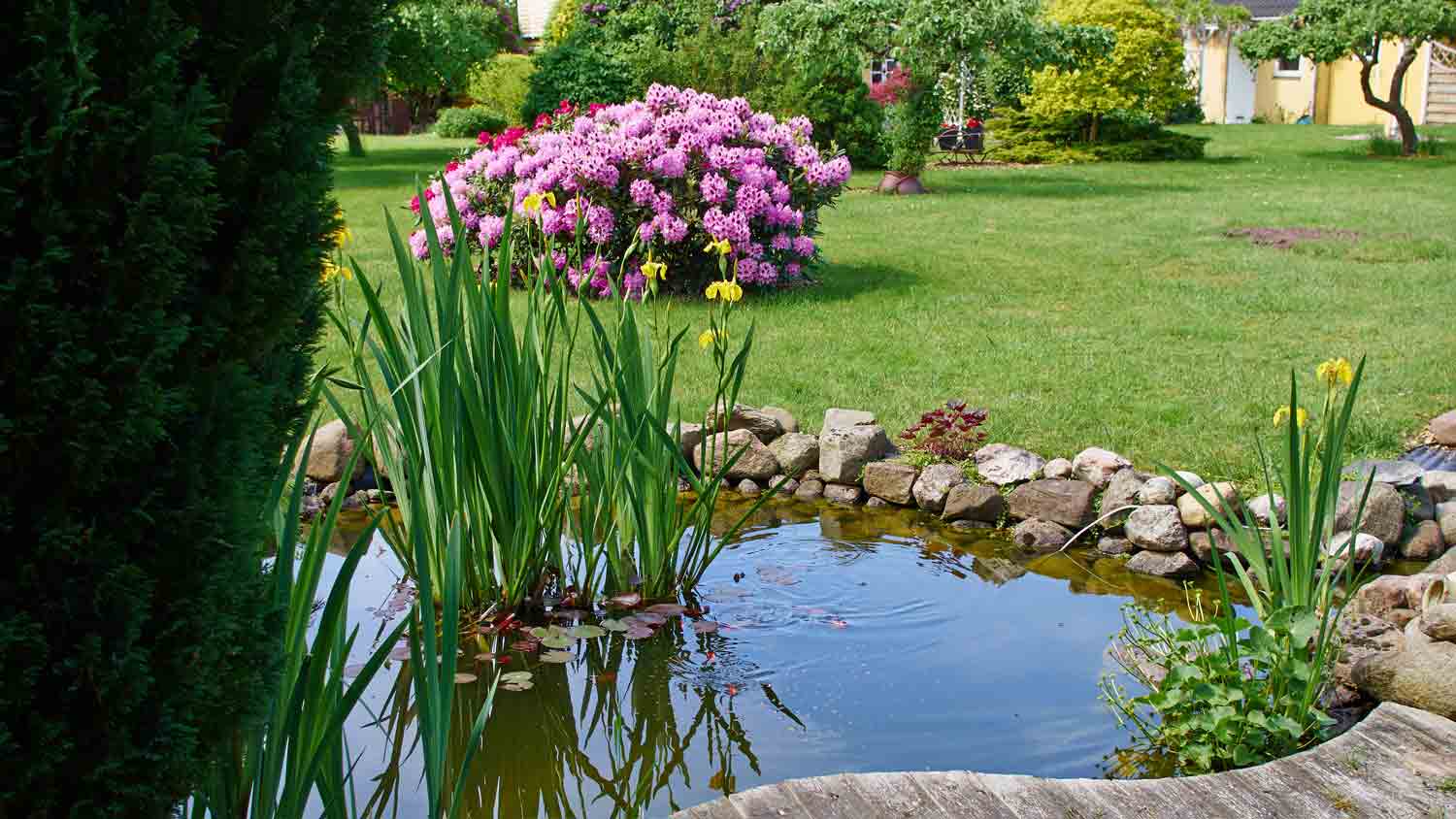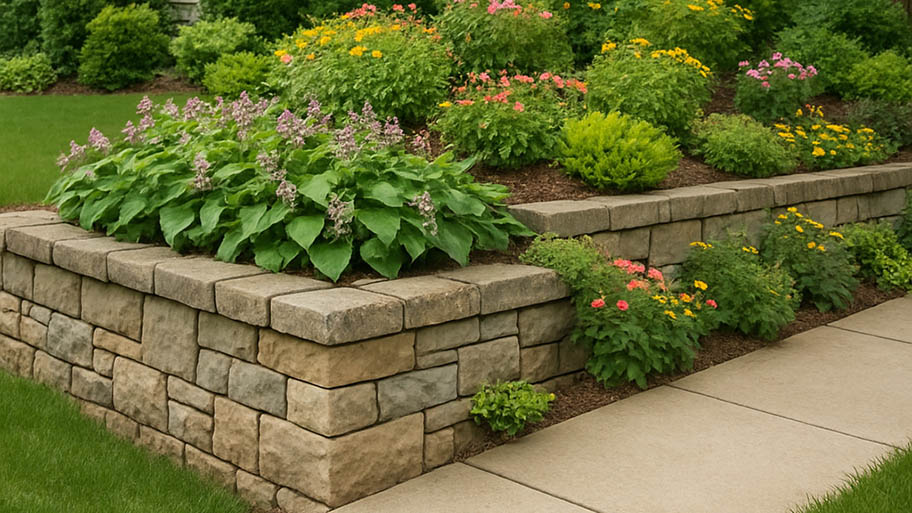
Ivy might look pretty, but you probably don’t want it in your garden. Learn how much it’ll cost to remove ivy by type, treatment method, and more.
Keep your garden buzzing with beneficial pollinators


Good pests in your garden include centipedes and ladybugs.
Roses attract ants and, by extension, mealybugs and aphids.
Don’t forget to add plants that attract pollinators.
For some people, the idea of planting a garden is one that holds plenty of promise. Not only is a garden sure to jazz up your outdoor spaces with the lush flora and fauna, but if you do it right, you might even end up with a bountiful harvest of delicious fruits and veggies that you grew yourself.
But while new gardeners are often twitterpated by visions of tomatoes and pretty flowers, many don't realize that gardens have an interesting ecosystem all their own. And the vegetation they plant could create an inviting environment that leads to an influx of tiny invaders, which can be good or bad.

By curating a collection of plants that attract helpful invaders, you can give your garden a fighting chance and maybe even help it flourish. Here are some great thought starters.
Clover can be beneficial to your lawn and garden in several ways. First, clover is known to enrich poor soil by converting nitrogen into fertilizer (courtesy of the bacteria in its root system).
If that alone doesn't bump clover up to the top of your list of things to plant this year, it can also keep small garden pests, like spider mites and whiteflies, in check by attracting the big-eyed bugs that like to eat them.
Not only are bee balm plants good for a dazzling display in your garden with blooms in all shades of red, pink, lavender, white, and purple, but bee balm is known as one of the best plants for attracting bees and other pollinators like butterflies and moths to your garden.
Yarrow plants are a hardy perennial, and their bright yellow heads really pack a punch in any garden. Even better, yarrow attracts ladybugs, which can help keep populations of garden aphids and other soft-bodied insects in check.
Most people are familiar with Roman chamomile because of the delicious teas the plant is known for. What most people don't know, however, is that Roman chamomile is excellent for creating a habitat for pollinators like hoverflies, beneficial wasps, ladybugs, and honey bees.
If that weren't enough of a resume, Roman chamomile has also been known to repel mosquitos, and as a little bonus, it makes a great ground cover.
Marigolds are often used in gardens to give the space a colorful bump during the spring and summer months. But beyond adding pops of color to your garden, marigolds also attract butterflies, bees, ladybugs, and other beneficial insects that can help your garden thrive.
Although sweet alyssum is a member of the mustard family, this plant produces delicate honey-scented flowers throughout its growing season. As you might have guessed, the sweet scent attracts common pollinators like bees, butterflies, and hummingbirds.
It's worth noting that if you live in an area with a high deer population, sweet alyssum is a good way to keep those guys out of your garden, as they're not too fond of the sweet smell.
Also known as echinacea, coneflower has enjoyed a long and rich history in herbal medicine. Many people may not know that these pretty pink plants can be beneficial in gardens because they attract pollinators like bees and butterflies.
Not only is fennel a lush and aromatic addition to your garden, but these plants are known to attract green lacewings, who tend to enjoy a diet of mealybugs, small caterpillars, and other soft-bodied insects.
Growing up to 15 feet in some cases, sunflowers are a towering but beautiful addition to most gardens. Beyond their obvious beauty, sunflowers may help attract spiders in your garden, who, in turn, feast on small pests like fleas and ants.
Pennyroyal is a pretty flowering plant in the mint family. So as you might have guessed, the pungent mint scent is a natural repellent against fleas and ticks. But pennyroyal's benefits to your garden don't stop there. Pennyroyal is also known to attract hoverflies that happily feed on aphids and thrips, ultimately keeping those pesky invaders from attacking your bounty.
Golden marguerites are lovely flowering plants with yellow blooms that are part of the sunflower family. These plants may help attract parasitic wasps, which can help you keep insects like roaches, caterpillars, and beetles at bay.
If your garden is already abuzz with activity, but you don’t know what type of pests you’re dealing with, you could call a pest control pro in your area to break up the party.
Roses are standard fare in most gardens, and while these plants make a beautiful addition to your vegetation, it’s worth noting that they are notorious for attracting ants. While ants don’t present a direct threat to your roses, they often facilitate the destruction by teaming up with other insects.
Ants are known to carry mealybugs, aphids, and other species of sap-sucking insects to plants so that they can feed off the bi-products of those insects when they feed. Ultimately, aphid colonies can disfigure rose bushes by causing the leaves to yellow and twist, and they can even kill young rosebuds.
Insects in your garden can basically be divided into two categories: insects that feed on plants and insects that are garden allies. As you might have guessed, you’ll only want to roll out the welcome wagon to the latter category.
For example, centipedes and millipedes are highly desirable, as centipedes are known to kill other pests such as aphids and slugs. Millipedes do their part to help by breaking down organic matter around your yard.
Similarly, spiders (whether you like them or not) are incredibly helpful because they too love to munch on aphids, wasps, beetles, mosquitoes, and flies, all of which can do plenty of harm to a well-tended garden. And finally, butterflies and bees make excellent pollinators.
In addition to the usual suspects listed above, other beneficial bugs in your garden include:
Assassin bugs
Hoverflies
Green lacewings
Ladybugs
Praying mantises
Ground beetles
Parasitic mini-wasps
It’s also worth noting that, while these pests are quite beneficial to your garden, they’re also beneficial to the areas in and around your home, as they’re known to keep mosquitoes and other harmful bugs in check.
The ability to keep and maintain a garden is often a big plus for many homeowners, and if you’ve ever grown your own fruits or vegetables, you know the feeling. But while tomatoes, carrots, potatoes, and cauliflower may look deliciously tempting on your dinner table, you should know that these plants are notorious for attracting destructive pests.
Earwigs love a good diet of plant leaves and flower petals, and mice and rats will partake in anything and everything in your garden. Long story short, these pests can wreak havoc in your garden. So before you break out the shovel and the mulch, you might want to give some thought to what you’re putting on the menu.
When planting any of the above, your list of unwanted uninvited guests may include:
Ants
Earwigs
Mice and rats
Slugs and snails
Tomato moths
Wasps
Vine weevils
Woolly beech aphids
From average costs to expert advice, get all the answers you need to get your job done.

Ivy might look pretty, but you probably don’t want it in your garden. Learn how much it’ll cost to remove ivy by type, treatment method, and more.

From your flower beds to your walkway, river rocks make a classic addition to your landscape. Learn about the cost to install river rock to set a proper budget.

The cost to remove a boulder depends on the size, location, and equipment needed. Learn the average boulder removal cost and how to save money on removal.

When building a pond, you’ll have to choose a pond liner, which come in various materials and sizes. So, what size pond liner do you need? Let’s break it down.

Get a clear breakdown of geotechnical report costs, including average prices, cost factors, and tips to help homeowners budget for their project.

There is no one-size-fits-all retaining wall for your yard. In fact, the options are endless. Check out 20 retaining wall ideas to upgrade your hardscape.